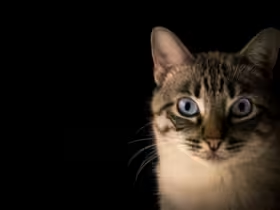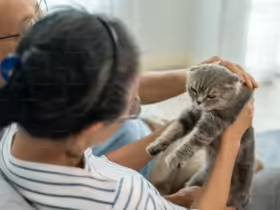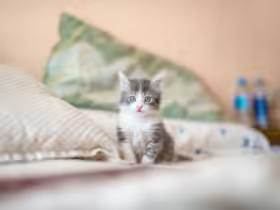When it comes to understanding our feline friends, we often focus on their unique behaviors and traits. One intriguing aspect of cat physiology is their vision. A common question among cat owners and enthusiasts is, “Can cats see color?” While cats are known for their sharp night vision and keen hunting skills, their color perception differs significantly from that of humans. In this blog, we’ll delve into how cats see color, the science behind their vision, and what it means for their daily lives.
The Basics of Feline Vision
Before we delve into color perception, it’s essential to understand how feline vision works. Cats are crepuscular predators, meaning they are most active during dawn and dusk. Their eyes are adapted for these low-light conditions, allowing them to see well in dim environments.
Rods vs. Cones
The retina, the light-sensitive layer at the back of the eye, contains two types of photoreceptor cells: rods and cones.
- Rods are responsible for vision in low light and do not detect color. They are highly sensitive to light and help cats see well in dim conditions.
- Cones are responsible for color vision and function best in bright light. Humans have three types of cone cells that allow us to perceive a wide range of colors.
Cats, however, have fewer cones compared to humans, which affects their color vision.
How Cats See Color
Cats have a different visual spectrum compared to humans. While they do see some colors, their range is limited. Here’s a closer look at what cats perceive:
The Cat’s Color Spectrum
- Blue and Green: Cats can distinguish between different shades of blue and green. They are quite adept at seeing these colors, though not as vividly as humans.
- Red and Pink: Cats have difficulty distinguishing between red and pink. These colors may appear as shades of gray or brown to them.
- Yellow: Cats can see some yellow, but it might not be as bright or distinct as it is to humans.
In summary, while cats do perceive colors, their experience is not as rich or varied as human color vision. They see a more limited spectrum, with blue and green being the most distinguishable colors.
Evolutionary Perspective
The limitations in feline color vision can be traced back to their evolutionary history. Cats are evolved to be nocturnal hunters. Their vision is optimized for detecting movement and distinguishing objects in low-light conditions rather than discerning a wide range of colors. Their superior night vision and ability to detect motion are far more critical for their survival and hunting success than a broad spectrum of color perception.
Comparison with Human Vision
To better understand how cats perceive color, it’s useful to compare their vision with human color perception:
- Human Vision: Humans have three types of cones sensitive to red, green, and blue wavelengths of light. This trichromatic vision allows us to perceive a broad spectrum of colors.
- Cat Vision: Cats have only two types of cones, sensitive primarily to blue and green wavelengths. This dichromatic vision means their ability to perceive colors is more limited compared to humans.
- Color Blindness: In a way, cats are somewhat “color blind” compared to humans. They don’t perceive red and pink as distinctly as we do, which is somewhat similar to red-green color blindness in humans.
Implications for Cats’ Daily Lives
Understanding how cats see color can provide insights into their behavior and preferences:
Toys and Play
When selecting toys for your cat, consider their color vision. Toys in blue and green hues are more likely to catch their attention compared to red or pink toys, which may not stand out as much to them. High-contrast toys that combine colors or have varied textures can also be more engaging for your cat.
Environmental Enrichment
Cats benefit from a stimulating environment. Providing various colors and textures in their surroundings can help keep them mentally and physically active. Although they may not see all colors vividly, the overall contrast and movement are important for their enrichment.
Training and Interaction
When training your cat or using visual cues for interaction, remember that they might not respond to colors the same way humans do. Using contrasting colors and movements can be more effective in gaining their attention and encouraging interaction.











Leave a Reply